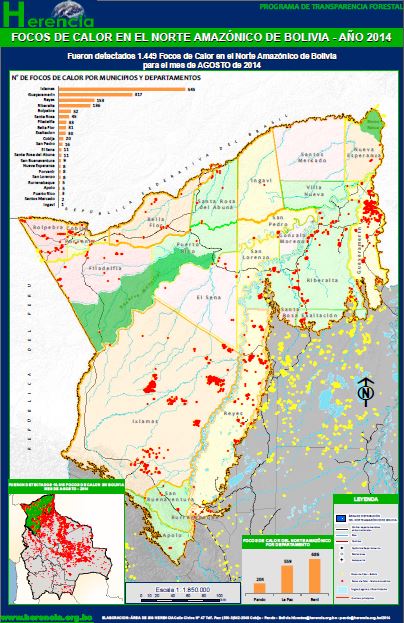The northern of department of Beni had the highest number of hot spots with 686, followed by La Paz with 599, and Pando had 204 hot spots.
Monthly Archives: September 2014
El País: Deaths in the Amazon reveal the scale of illegal logging in Peru
The country loses $ 250 million annually by illegal logging, say Interpol
The cheap option on climate change: recognize indigenous rights to forests
For example, Peru has leased out 60 percent of its share of Amazon rainforest as oil and gas concessions. This huge swathe of open-for-development land overlaps 70 percent of all indigenous communities in the nation.
Loreto: In Tamshiyacu deforestation does not stop and 2126 hectares have already been affected
Despite repeated complaints from affected residents, national press and civil society organizations, illegal deforestation of primary forests in Tamshiyacu (Loreto) continues.
La República: Madre de Dios says yes to the ban, but requires an investment plan
While interdiction and policy formalization of mining, from the central government, are critical in the fight for the protection of forests, these have not been accompanied by an alternative plan to mitigate the impact on the economy of the citizens of Madre de Dios.
Brazil cancels Tapajos dam auction due to indigenous concerns
Brazilian authorities have suspended the auction of the centerpiece of the massive Tapajós hydroelectric complex, reports Agência Brasil.
Ninja: After 35 years of fighting, indigenous people have demarcated land
In August this year, 2014, a court determined the vacating of the greatest and most enduring invasion of their land, the Mejer Farm.
RiaNovosti: Brazil builds tower to monitor climate effects in Amazon rainforest
A high-rise observation tower will be built in Brazil to monitor climate change and its impacts on the Amazon’s ecosystem.
The Guardian: Drought bites as Amazon’s ‘flying rivers’ dry up
The unprecedented drought now affecting São Paulo, South America’s giant metropolis, is believed to be caused by the absence of the “flying rivers” − the vapour clouds from the Amazon that normally bring rain to the centre and south of Brazil.
Daily Sabah: Ecuador – Amazon’s Lush Green turns Dark Black
What makes Lago Agrio different is the ongoing ecological disaster. Disease and death began to spread around the town and the surrounding village of Shushufundi after the petroleum wells were opened in 1962.











